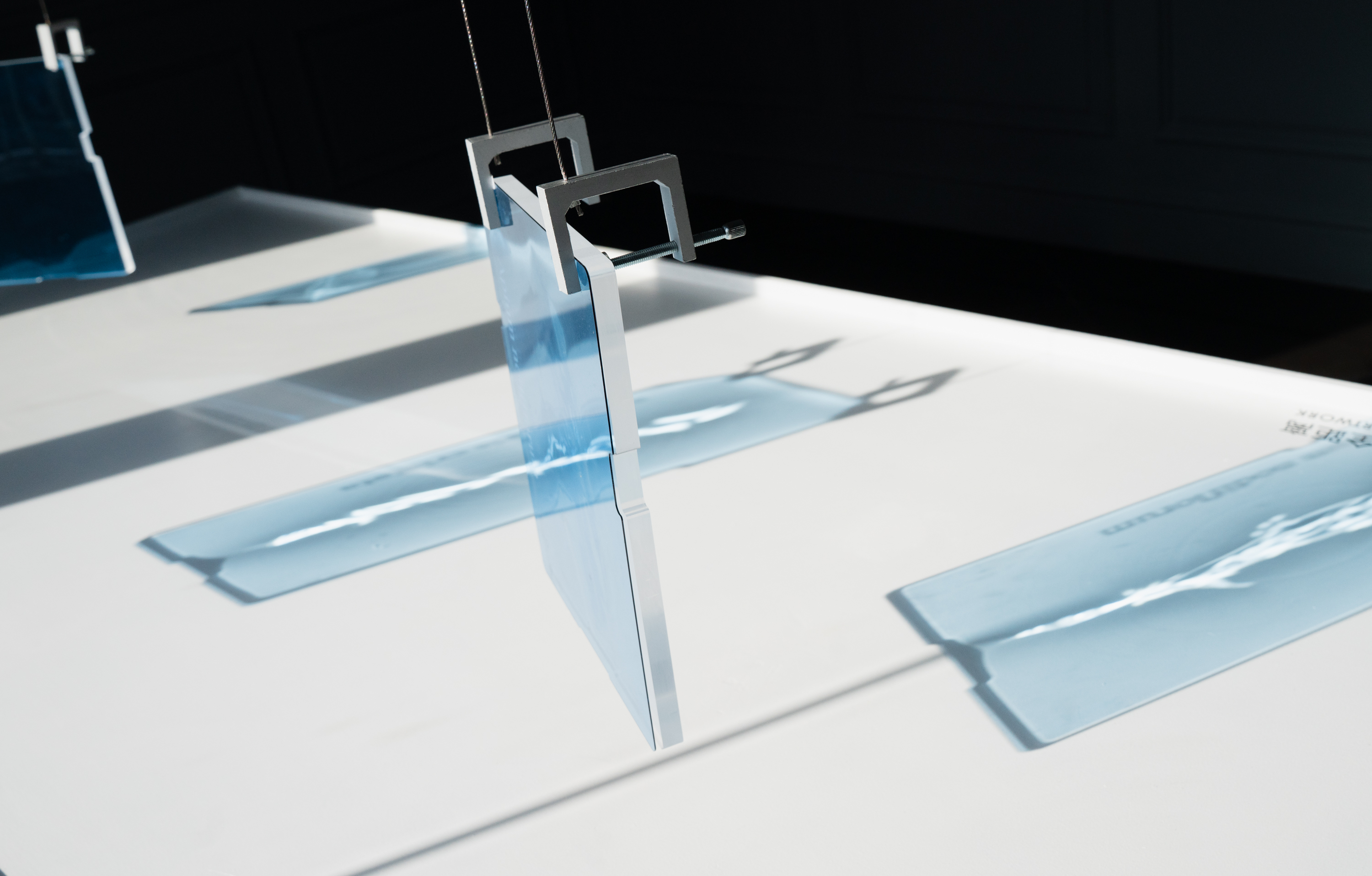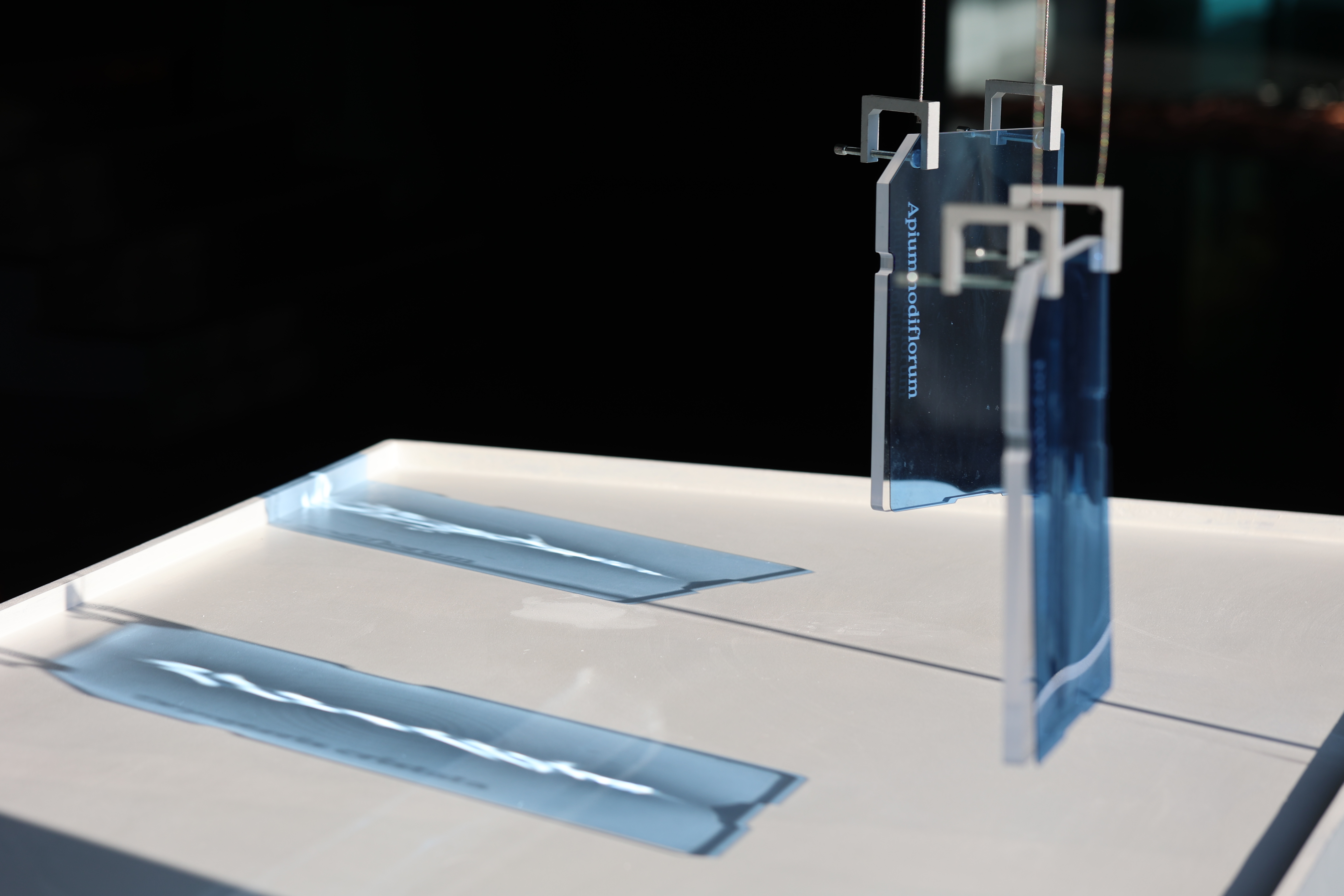Endangered Herbarium
濒危植物标本集



Fragmentin,Endangered herbarium,2022,acrylique,wire,aluminium clamps,21x27x1.5cm,image courtesy of Fragmentin“碎片网络”小组,濒危植物标本集,2022年,电线,铝夹,21x27x1.5cm,图片版权归属Fragmentin
"Endangered herbarium" is an artwork that highlights local endangered plants and speculates on the future of archiving.For his first exhibition at Art Biesenthal in Berlin this summer, this poetic piece will take the form of a triptych of transparent blue Plexiglass sheets.
Three SD card shaped panels with slight undulations on their surface - reveal and project onto a plane - thanks to the sunlight that passes through them - silhouettes of plants composed of light and shadow. Each pane of glass contains an image of a type of local endangered plant that may eventually disappear due to global warming or the destruction of natural habitats. Letters are also engraved on the plexiglass, corresponding to the Latin name of each plant. The three featured plants are a "Apium nodiflorum", a "highly endangered" species, a "Papaver occidentale", a type of poppy that is "threatened" and a "Dryopteris cristata", a plant considered "vulnerable" by the red list of endangered plants.The blue colour of the projected shadow echoes a cyanotype effect (the first negative monochrome photographic process of 1842 by which a Prussian blue photographic print is obtained, the first cyanotype was the image of a herbarium composed of seaweed by Anna Atkins). This "herbarium in danger" has the particularity of evolving during the day according to the position and the light intensity of the sun: changing from a very clear image to a blurred and distorted one. The plants hidden inside the surface of the plexiglass only appear thanks to the sunlight, thus directly echoing the process of photosynthesis that every plant needs to survive. On a bad weather day and during the night they disappear completely, leaving only the engraved letters (their name in Latin), as the only remaining memory of the plant.
《濒危植物标本集》是一件突出当地濒危植物并推测未来档案的艺术作品,于今年夏天在柏林的Art Biesenthal的展览中首次展出。这件诗意的作品将采取蓝色透明有机玻璃片三联画的形式。
三块SD卡形状的面板表面有轻微的起伏,通过一种特殊的光学技术将内容显示并投射到一个平面上,随着阳光穿过它们,由光和影组成的植物剪影开始浮现。每块玻璃都包含一种当地濒危植物的图像,由于全球变暖或自然栖息地的破坏,这些植物最终可能会消失。作品在白天根据太阳的位置和光线强度而变化:从清晰变为模糊和扭曲的图像。隐藏在有机玻璃表面的植物只在阳光下出现,从而呼应了植物生存所需的光合作用过程。在天气不好的时候和晚上,它们会完全消失,只留下雕刻的字母,作为植物的唯一剩余记忆。

